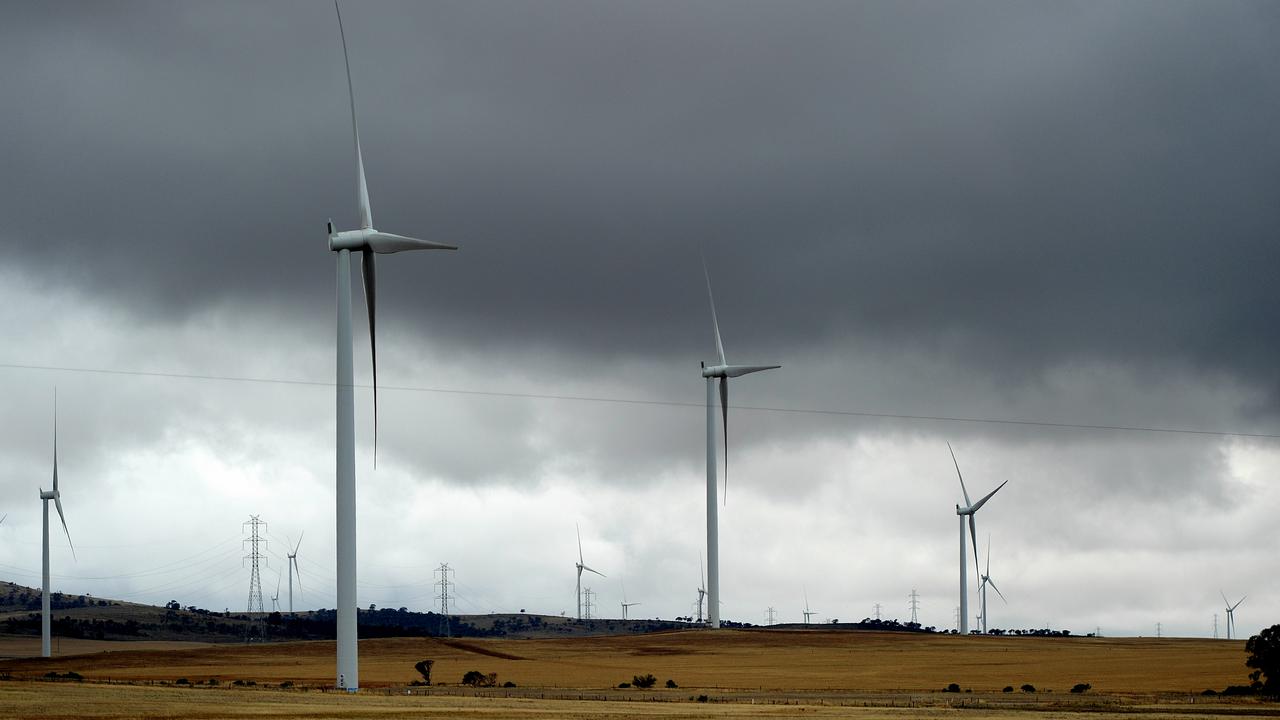Another year closer to 2025 and Australia’s climate change fix still makes zero sense | Alexander Downer
Climate change is obvious but that doesn’t mean Australia’s high-price fix adds up, writes Alexander Downer.
Opinion
Don't miss out on the headlines from Opinion. Followed categories will be added to My News.
Another year has clicked over on the long march to 2050. I’ve often wondered what would be the most likely outcome by the time we meet that date.
Will we have built eight nuclear powered submarines in Adelaide? Will Australia have met its net zero target?
Or will the second coming have happened? Of those three propositions the most likely is the second coming.
It’s not that I have any insight into the second coming.
But I have no evidence it won’t happen whereas it seems pretty obvious the cost of building the submarines in Adelaide is prohibitive and the attempt to reach net zero will continue to drive up energy prices increasing community anger.
I say anger because until the last decade SA governments have striven to keep energy prices down.
Not only was that ambition an important contribution to the living standards of the general public but it was axiomatic to building and maintaining South Australia’s industrial base.
Tom Playford as the premier nationalised the state’s electricity authority in the 1940s because he thought the private company was charging too much for energy and supplies of coal from New South Wales left the state vulnerable.

Today, South Australia not only has the most expensive electricity prices in Australia but among the most expensive in the whole world.
As a result, manufacturing has fled the state and our economic growth figures are vulnerable to the vagaries of the rural sector.
Yes our politicians boast that 75 per cent of South Australia’s electricity now comes from renewables – that is, solar and wind power.
We’re told that this is a good thing because not only will it stem the increase in global temperatures but renewables are cheaper than power generated by fossil fuels.
It just isn’t common sense. Neither of those propositions is remotely true.
Let’s just take the climate.
Whatever we do in South Australia is not going to make one iota of difference to the global temperature.
Even if we close down South Australia altogether it wouldn’t reduce the growth of global temperatures by any measurable amount.
It would be worth doing if the second proposition – that renewables are cheap – was true. But it’s not.
The cost of installing wind turbines and solar panels coupled with the need to build transmission lines to the population is simply massive.
Wind and Solar are intermittent and so some base load power needs to be provided either by fossil fuels or nuclear power.
At the moment, we depend on gas and electricity from other states when the wind isn’t blowing and it’s dark.
A gas power station providing just base load power nevertheless costs as much to build and to run as a gasified power station operating 24/7.
There still needs to be a return on the capital investment made in the power station and if it is only used from time to time that cost is simply enormous.

Because renewables are intermittent, we have to fund two power systems not just one.
That explains why the renewable energy revolution is pushing up electricity prices. International comparisons simply prove that point.
In its latest figures, the International Energy Agency data from 70 countries shows that those with no or negligible solar and wind power charge around $0.12 per kilowatt hour.
We average over $0.40 cents.
For every 10 per cent increase in solar and wind power’s share of total energy electricity production, the price of electricity increases by five cents a kilowatt hour.
Let’s just look at Germany as an example.
In Germany, which closed most of its coal and nuclear power stations, electricity costs around $0.30 per kilowatt which is double the cost in the United States and triple the cost in China.
Advocates of renewables will tell you that electricity can be stored in batteries.
Well, in Germany their entire battery storage lasts for just 20 minutes!
Last month when the wind did not blow in Germany, the price of electricity rose to one dollar a kilowatt hour.
It’s not surprising that Germany has been in recession off and on for the last two years and its famed car manufacturers are moving offshore.
Our state government is spending $600 million of borrowed money to build a hydrogen power station.
In the short-term, this power station will have to use gas.
But in time it is possible that hydrogen will become accessible and possibly relatively cheap. Although that is a long way off.
Don’t get me wrong, I’m not a climate change denier or sceptic. I can see that it’s happening. And in Australia we have to make a proportional contribution to the global effort.
But we don’t have to go further than that imposing on ourselves eye watering costs which make zero contribution to climate change.
In all my years in government, when proposals came forward to spend taxpayers money we always examined very carefully what the benefits of that expenditure would be.
A massive expenditure on renewables in South Australia is forcing up electricity prices and making no contribution whatsoever to the climate.
It just doesn’t make sense.
More Coverage
Originally published as Another year closer to 2025 and Australia’s climate change fix still makes zero sense | Alexander Downer









